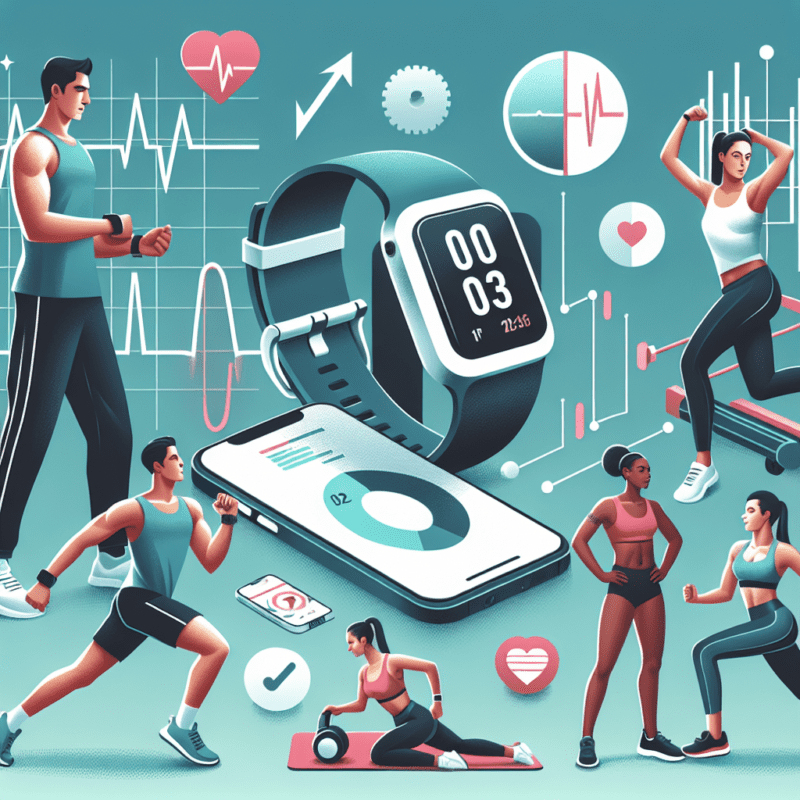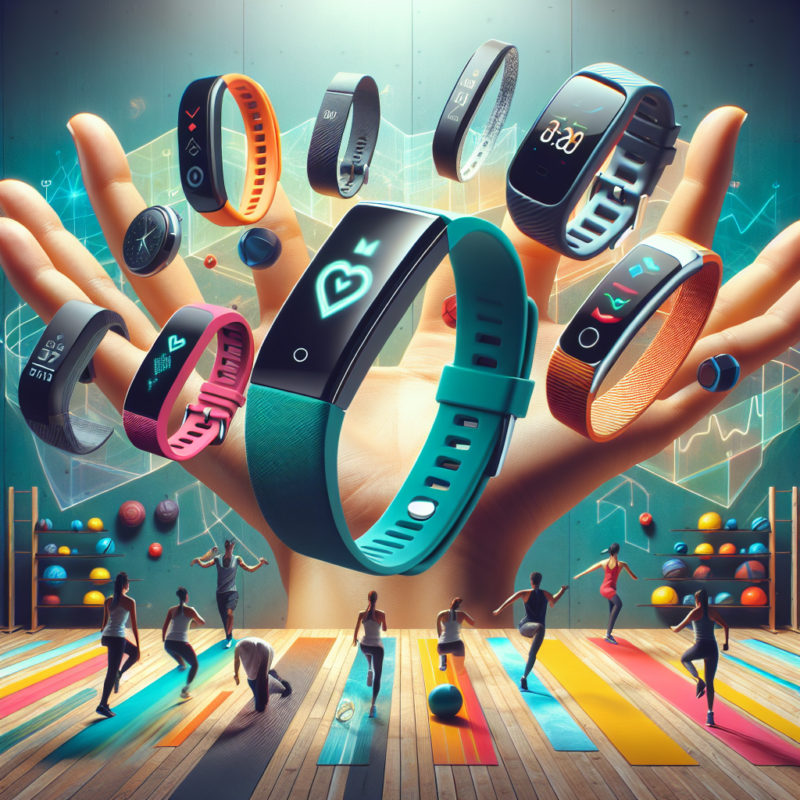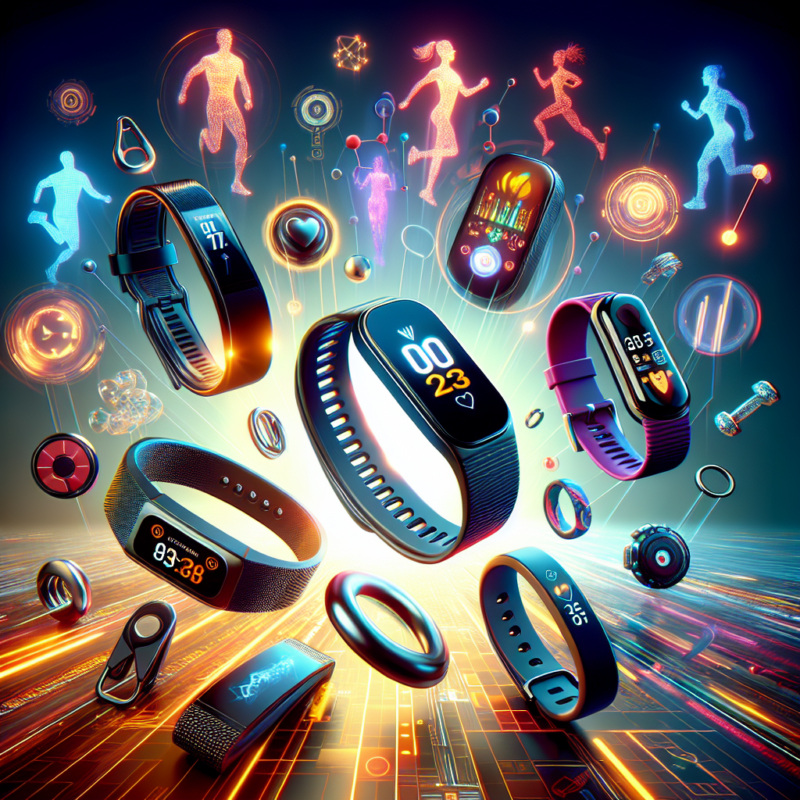In today’s fast-paced world, fitness enthusiasts and casual exercisers alike are leveraging technology to take control of their health and well-being. Smart wearables, devices equipped with the latest technology, are revolutionizing personal fitness by providing real-time data, insights, and motivation. From tracking daily activity levels to monitoring heart rates, these innovative tools significantly enhance your fitness journey, making it more effective and enjoyable. This article delves into how smart wearables can elevate your fitness experience, offering a detailed exploration of their features, benefits, and the future of fitness technology.
The Rise of Smart Wearables in Fitness
Smart wearables have become a prominent part of modern fitness regimes, driven by rapid advancements in technology and an increasing awareness of health issues. These compact, user-friendly devices range from smartwatches and fitness trackers to smart clothing and earbuds, providing users with a versatile way to monitor their health metrics. The popularity of smartphones and mobile applications has also contributed to the surge in wearable technology, allowing users to track their progress seamlessly through connected apps.
The health and fitness industry has adapted to this new trend, with many manufacturers designing specialized wearables that cater to various physical activities and health goals. For instance, runners can find devices that precisely measure distance and pace, while cyclists can monitor their performance metrics in real-time. This broad range of options means that anyone, regardless of their fitness level, can harness this technology to optimize their workouts and achieve their health goals.
Key Features of Smart Wearables
One of the primary reasons smart wearables have gained traction is the impressive array of features they offer. Most fitness trackers and smartwatches come equipped with heart rate monitors, GPS, sleep tracking, and various fitness metrics—making them invaluable companions for fitness enthusiasts. Heart rate monitors enable wearers to maintain their workout intensity within the desired heart rate zone, optimizing calorie burn and cardiovascular health. Meanwhile, built-in GPS tracking assists users in monitoring their outdoor activities without the need for a smartphone.
Additionally, many smart wearables offer unique features tailored to specific fitness goals. For example, advanced sleep trackers analyze sleep quality by measuring movement, heart rate, and even blood oxygen levels. Some devices come with guided workouts and personalized coaching, providing users with structured exercise regimens based on their fitness data. These features not only enhance the workout experience but also empower users to make informed decisions about their health and fitness plans.
The Benefits of Using Smart Wearables During Workouts
Integrating smart wearables into your fitness routine presents numerous advantages that can lead to improved results. Firstly, by providing real-time data and metrics, these devices help users set and achieve specific fitness goals. This level of awareness fosters accountability and motivation, essential components for successfully adopting and sticking to an exercise regimen. As users see constant progress—like monitoring step counts or calories burned—they are often inspired to push beyond their limits.
Secondly, smart wearables contribute to injury prevention and recovery. With sensors measuring physiological metrics, users can identify signs of overtraining or fatigue, allowing them to adjust their workouts accordingly. This scientific approach not only enhances performance but also reduces the risk of injuries, ensuring a longer and more fulfilling fitness journey. Moreover, some devices offer recovery suggestions by analyzing workout data to recommend optimal rest periods, thereby facilitating a balanced approach to training.
Lastly, the connectivity features of smart wearables allow users to engage with online fitness communities. Many wearables enable users to share their fitness data on social media or within dedicated apps, promoting a sense of community and support. This social aspect can be incredibly beneficial, as users often find motivation and inspiration through shared achievements and mutual encouragement.
Choosing the Right Smart Wearable for Your Fitness Goals
When it comes to selecting the ideal smart wearable, understanding your personal fitness goals is crucial. The market is filled with devices that cater to different needs, so it’s essential to consider factors such as sport-specific metrics, battery life, design, and compatibility with other devices. For instance, an avid runner might prioritize a wearable with advanced GPS features and heart rate monitoring, while someone focused on strength training may prefer a device with interval timing and movement tracking capabilities.
Compatibility is another factor to consider, especially if you use various fitness apps. Many wearables sync seamlessly with popular platforms, ensuring your data is centralized and easy to analyze. Additionally, the design of the device matters as it influences comfort and usability. Some users may prefer a smartwatch with a stylish look that can double as a regular watch, while others might opt for more discreet fitness trackers that can be worn throughout the day without drawing attention.
Budget plays a significant role in the decision-making process as well. Smart wearables range from affordable fitness trackers to high-end smartwatches featuring advanced capabilities. Conducting thorough research and reading user reviews can help you make an informed choice that aligns with both your performance needs and financial considerations.
The Future of Smart Wearables in Fitness
As technology continues to evolve, the future of smart wearables in fitness looks promising. Innovations such as improved biometric sensors, enhanced analytics, and artificial intelligence are expected to make devices even more sophisticated. Future wearables may be capable of more accurately predicting health risks and offering personalized health insights that can help users proactively manage their well-being.
Moreover, the integration of augmented reality (AR) and virtual reality (VR) into fitness wearables could create immersive workout experiences. Imagine participating in virtual fitness classes where you can interact with trainers and other participants in a simulated environment while receiving live feedback on your performance. These advancements could transform traditional workouts into engaging and highly motivating experiences.
Furthermore, as the world moves towards sustainability, expect eco-friendly smart wearables made from recyclable materials to gain popularity. Manufacturers are already beginning to consider the environmental impact of their devices, and future innovations may also incorporate features like solar charging to extend battery life sustainably.
Adapting Your Lifestyle with Smart Wearables
Embracing smart wearables is not just about enhancing workouts; it’s about integrating technology into your daily lifestyle. By tracking your daily activities, these devices can help you understand your overall wellness, inspiring healthier habits even outside your dedicated workout sessions. You can set daily step goals, track your water intake, and monitor your sleep patterns, allowing for a holistic approach to wellness.
Incorporating smart wearables into your lifestyle can foster mindfulness regarding your health choices. Many devices feature reminders to stay active, encouraging users to stand up or walk around after long periods of inactivity. This aligns with the growing trend of promoting not just fitness, but overall well-being and mental health. By developing the habit of regular movement and self-monitoring, you build a strong foundation for long-term health benefits.
Lastly, smart wearables often come with access to wellness programs, nutrition tracking, and mental health features such as guided breathing exercises and mindfulness practices. By using these complementary features, users can enjoy a well-rounded fitness journey that prioritizes not only physical health but also mental and emotional well-being. This comprehensive approach can transform how people view exercise and health, creating a more sustainable and enjoyable lifestyle.
Conclusion
Smart wearables are revolutionizing the way we approach fitness, providing tools that not only enhance workouts but also promote a holistic understanding of health and wellness. With their vast array of features, these devices empower users to set specific goals, make informed decisions, and build community networks. As technology continues to evolve, it will be exciting to see how smart wearables further integrate into our daily lives, making fitness not just effective but also enjoyable and accessible to all. By embracing these tools, individuals can truly enhance their fitness journey and set themselves on a path towards better health.
FAQs Section
What are smart wearables?
Smart wearables are electronic devices worn on the body that offer various features for tracking and analyzing health metrics, fitness activities, and daily movements. Examples include fitness trackers, smartwatches, and smart clothing.
How do smart wearables improve fitness?
Smart wearables improve fitness by providing real-time data on workout intensity, heart rates, and activity levels. They help set specific fitness goals, encourage consistency, and can assist in preventing injury by monitoring user performance.
What features should I look for in a fitness tracker?
When choosing a fitness tracker, consider features like heart rate monitoring, GPS capabilities, sleep tracking, battery life, compatibility with mobile apps, and any sport-specific metrics that fit your workout routine.
Are smart wearables compatible with smartphones?
Yes, most smart wearables can sync with a wide range of smartphones, allowing users to access their fitness data via dedicated apps and manage settings easily.
Can smart wearables help with weight loss?
Absolutely, smart wearables can assist in weight loss by tracking calories burned, monitoring activity levels, and encouraging users to stay active throughout the day, ultimately promoting healthier lifestyle choices.



